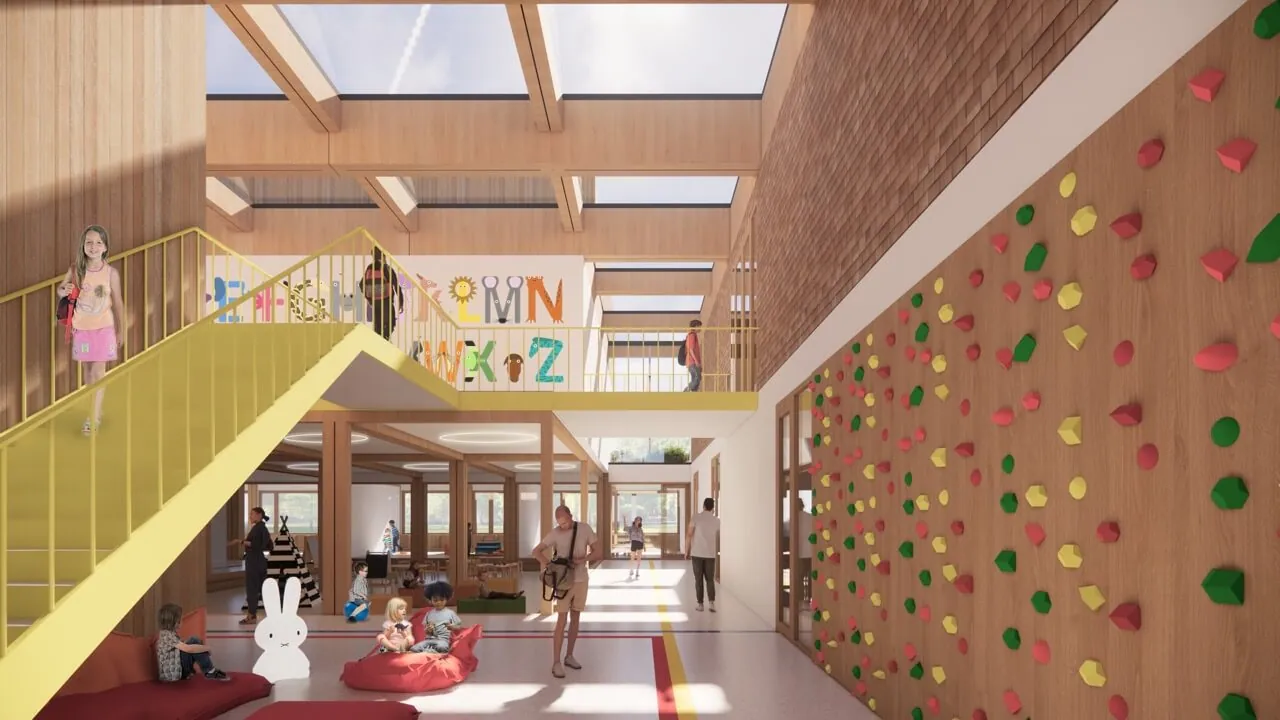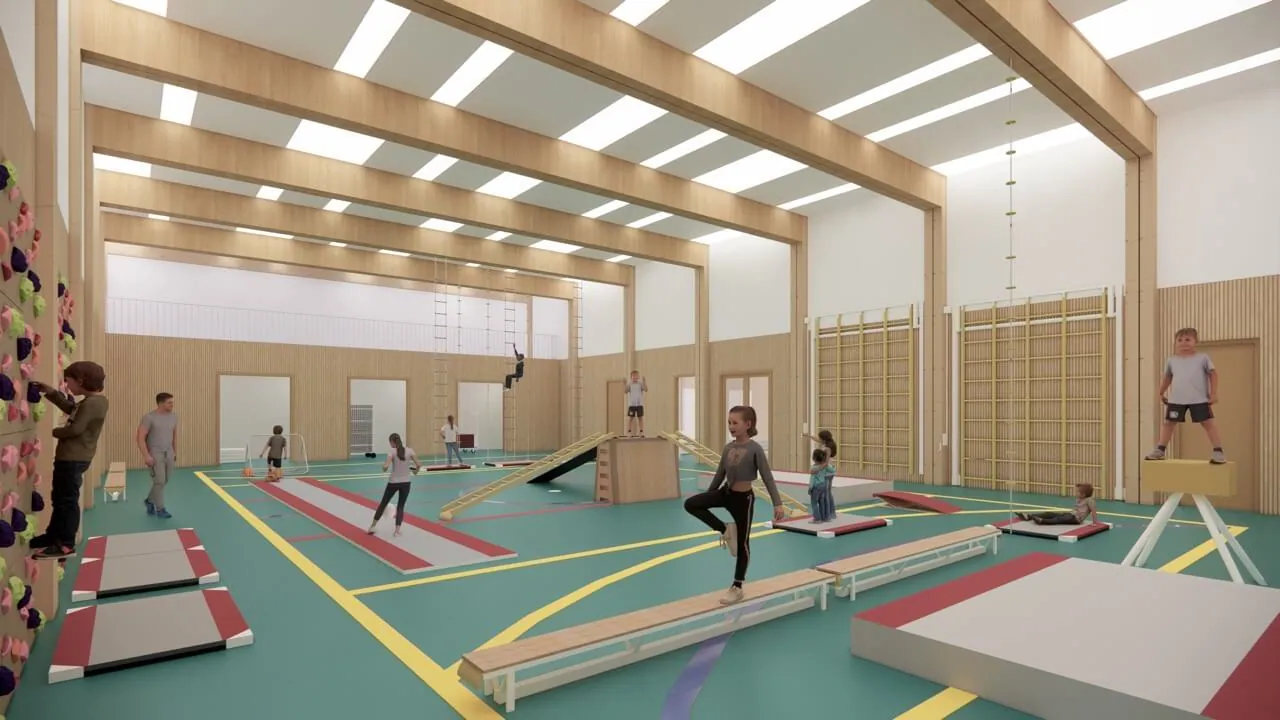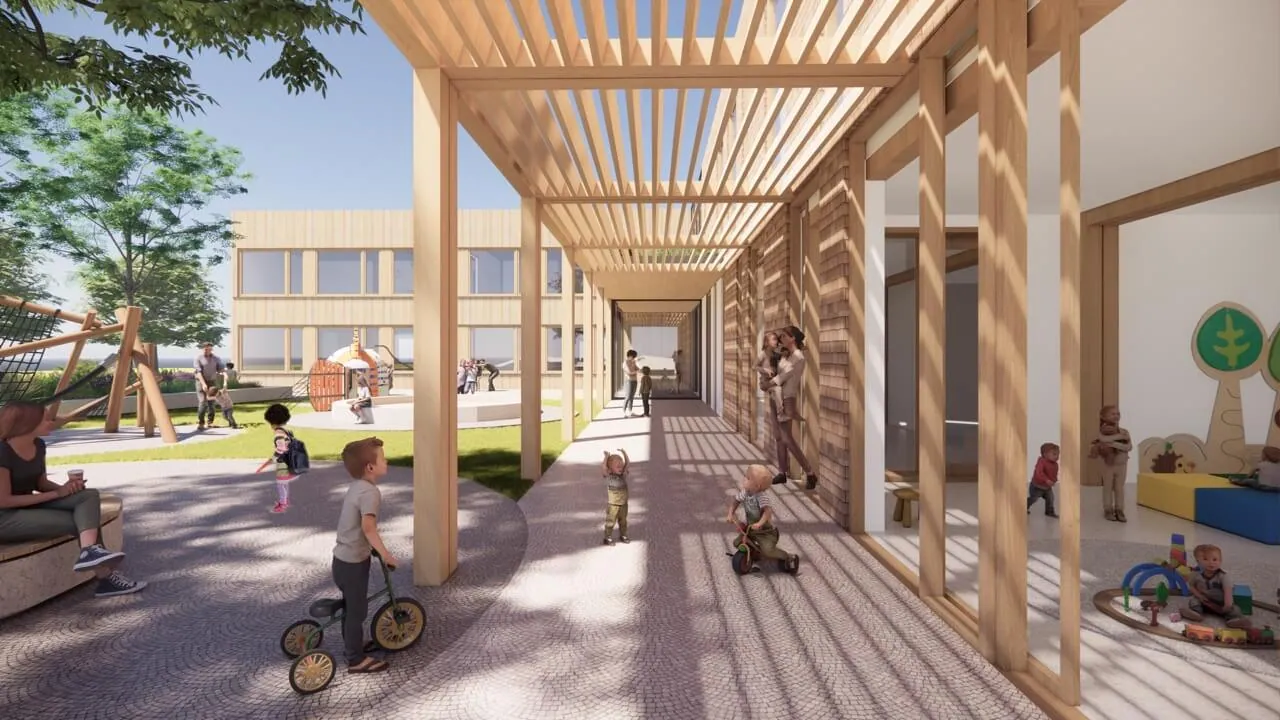Children are the sustainability ambassadors of the future. That is Circlewood's vision when it comes to the construction of new school buildings in Amsterdam. Circlewood is a consortium consisting of Oosterhoff, Noordereng Groep, Heko Spanten, Lomans, DWA, Ferross Staalbouw and Hedgehog Company. TNO (Dutch research institute) is involved as an independent knowledge and development partner, and David Gianotten (from OMA) is the creative director of Circlewood. The Municipality of Amsterdam and Circlewood found each other in their ambition for high-quality, sustainable and flexible school buildings. Circlewood, together with two other consortia (Hegeman and M3V), has therefore won the tender from the Municipality of Amsterdam to build between nine and thirty new schools over the next ten years. The municipality uses the new tendering method for this, the Innovation Partnership (IPS).

Sustainability requires new ways of thinking: tenders
The Innovation Partnership gives market parties the space to (further) develop innovations and at the same time build several sustainable, flexible and high-quality school buildings within budget. Last year, 32 parties were allowed to present their plans to the municipality. Subsequently, five were selected by a jury and now three winning teams have emerged. They conclude a ten-year framework agreement with the municipality for the realization of a total of at least nine school buildings. These parties will enter a research and development phase in the coming six months, in which they can further develop their concept and working method. Ultimately, each school can choose from three designs, which are then realized by the associated parties.

Sustainable buildings for sustainability ambassadors
André Speksnijder (ABT) on behalf of Circlewood: “The look and feel of each school will be unique, but the uniqueness of our design is on the inside: a school that is ultimately sustainable and biobased. It is our philosophy that if you want to create a sustainable society, you have to start with primary education where the children are formed. If they grow up in a sustainable environment, they will look at the future differently than if they were taught in a concrete bunker, so to speak.” Karin Kuipers (Noordereng Group) adds: “At Circlewood, we want our children to develop into sustainability ambassadors of the future. Our consortium is intrinsically motivated to shape our children's environment in such a way that the children are inspired, motivated and activated to leave their world better than we did and do.”

The HoutKern Sustainable Construction method
The innovative HoutKern Building Method will be applied at the schools. This method was developed by the parties that now form Circlewood and was first used in The Natural Pavilion at the Floriade Expo 2022. The basis of the HoutKern Construction Method is formed by a CLT floor, a steel knot and wooden columns. André Speksnijder: “Think of it as a large K'nex box with which we put buildings together. In addition to standard modules, this K'nex box also contains various expansion elements, with which school buildings can be enriched playfully and still have their own character.”

The HoutKern Building Method helps to realize life-resistant and adaptive buildings. For example, the school buildings will first and foremost have to be climate-adaptive and also socially-adaptive. A school building must be able to grow and shrink during its lifespan. It must also be able to move along with developments in education.
The kick-off of the research and development phase took place on 17 November with the three consortia and the Municipality of Amsterdam. Circlewood is ready for this important assignment!
Pictures: © Studio A Kwadraat





